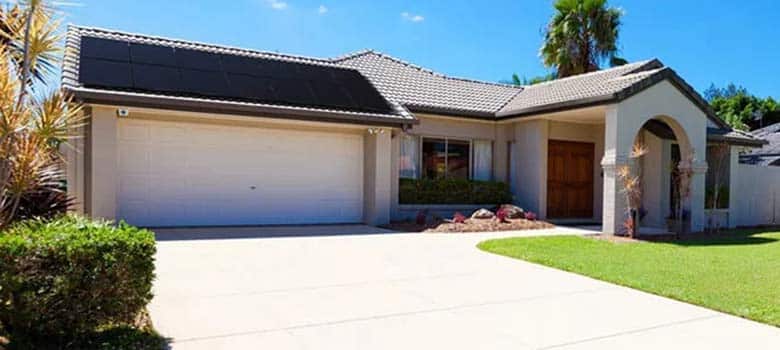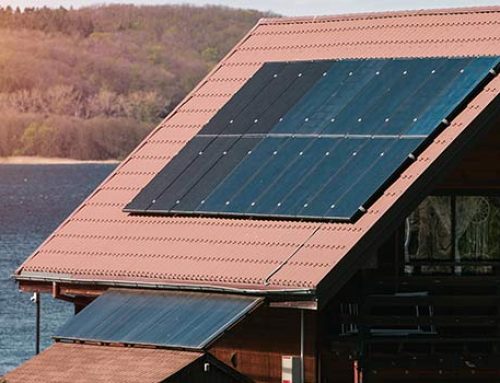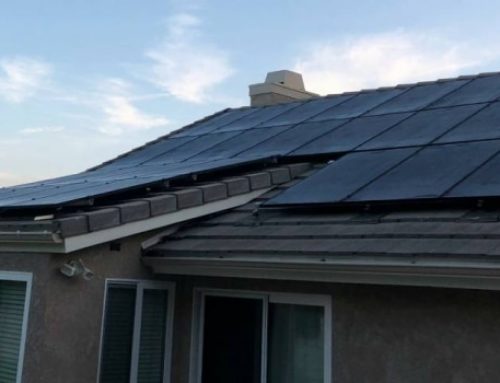Adelaide, known for its Mediterranean climate and an average of more than 2,500 hours of sunlight annually, is a prime location for renewable energy systems.
Solar panels are a sustainable and cost-effective way to generate electricity for your home or business. However, choosing the right roof direction for your solar panels is crucial to maximise their efficiency and energy production.
In this guide, we’ll cover:
- Overview of solar directions
- Pros and cons of different solar orientations
- Factors to consider when making a choice
- Government incentives and warranties
- Understanding solar costs
The orientation of your panels can significantly impact their performance. The direction your panels face can affect how much sunlight they receive, determining their energy production and efficiency.
In this article, we’ll explore the best roof directions for solar panels in Adelaide. We’ll cover the options available to you and explain why making the right choice is essential for your energy needs and cost savings.
So, whether you’re considering installing renewable energy system or already have panels in place, read on to make the most of Adelaide’s sunny climate and your investment in renewable energy.
ENERGY BUSTER TIPS:
|
Overview of Solar Directions
1. North-Facing Panels:
If you want to maximise your renewable energy efficiency, north-facing panels are often the top choice. These panels are oriented towards the north, specifically the north-northwest, to capture the most sunlight throughout the day.
North-facing panels receive direct sunlight for the longest period, which translates to higher energy production and better returns on your investment.
2. East-Facing Panels:
They are an excellent choice if you’re looking to maximise your energy generation during the morning hours.
These panels capture the early morning sun and can be a great option if you have high energy consumption in the morning or if you’re looking to spread your energy production more evenly throughout the day.
3. West-Facing Panels:
West-facing panels are ideal for capturing the afternoon sun. If you have higher energy consumption in the afternoon or evening, or if you want to make the most of Adelaide’s late afternoon sun, west-facing panels can be a strategic choice.
4. East-West Split Installation:
For some homeowners, an east-west split installation can be the best solution. This configuration involves installing panels on both the eastern and western sides of your roof.
It allows you to capture sunlight from both the morning and afternoon, balancing your energy production throughout the day.
Now that we’ve covered the options, you might wonder why choosing the right roof direction matters. The answer lies in optimising your solar panel system’s energy production and financial benefits.
When your panels are correctly oriented, they can generate more electricity, which means lower energy bills and a quicker return on your investment.
By selecting the best roof directions for solar panels, you’re harnessing Adelaide’s abundant sunlight to its fullest potential. This not only helps you reduce your carbon footprint but also saves you money in the long run.
Choosing Your Solar Panel Direction: Options and Considerations
Let’s delve deeper into each option and weigh the pros and cons. Understanding these factors will help you make an informed decision based on your unique energy needs and goals.
1. North-Facing Panels:
Pros:
- Maximum Sunlight: North-facing panels receive the most direct sunlight throughout the day, leading to higher energy production.
- Efficiency: These panels are highly efficient, making them a reliable choice for Adelaide’s sunny climate.
- Better ROI: The increased energy production translates into quicker returns on your investment.
Cons:
- Limited Morning and Evening Production: They don’t capture sunlight during the morning and late afternoon, which might not align with your energy consumption patterns.
- Limited Flexibility: North-facing panels are optimised for a specific direction, so you might need more roof space to achieve your desired energy output.
2. East-Facing Panels:
Pros:
- Morning Energy Boost: East-facing panels capture the early morning sun, making them perfect if you consume more energy during the morning hours.
- Evening Shade: They avoid the scorching afternoon sun, which can help maintain panel efficiency in extreme heat.
- Balanced Production: Suitable for those who want to spread energy production evenly throughout the day.
Cons:
- Reduced Peak Output: They produce less energy than north-facing panels due to the limited sun exposure in the afternoon.
- Extended Payback Period: It may take longer to see significant energy savings compared to north-facing panels.
3. West-Facing Panels:
Pros:
- Afternoon Energy Boost: West-facing panels capture the afternoon sun, which can be beneficial if you have high energy consumption in the afternoon or evening.
- Avoids Morning Shade: They avoid morning shade, ensuring your panels start producing energy earlier in the day.
- Evening Comfort: They can help power your home during the evening, reducing reliance on the grid.
Cons:
- Reduced Morning Output: West-facing panels generate less energy in the morning compared to east-facing or north-facing panels.
- Heat Exposure: They might be exposed to more intense afternoon heat, potentially affecting panel longevity.
4. East-West Split Installation:
Pros:
- Balanced Output: This configuration provides a balanced energy production profile throughout the day, optimising your energy self-sufficiency.
- Flexibility: You can adapt to your energy consumption patterns, capturing both morning and afternoon sun.
- Maximises Roof Space: Efficient use of available roof space without the need for additional structures.
Cons:
- Higher Installation Costs: It may be slightly more expensive to install panels in both east and west directions.
- Spacing Requirements: Requires careful planning to ensure that your roof can accommodate panels in both directions.
What Are the Best Types of Roofs for Panels?
If you prioritise maximising energy production and ROI, north-facing panels are a strong choice. East-facing or west-facing panels might be more suitable for those with distinct energy consumption patterns or concerns about extreme temperatures.
If you prefer a balanced approach, an east-west split installation offers flexibility and consistent energy production.
To make an informed decision, consider your energy consumption habits, budget, and available roof space. Don’t hesitate to consult with experts who can provide personalised guidance based on your unique circumstances.
Factors to Consider When Choosing Your Solar Panel Direction
Let’s delve into the key factors you should consider when making your decision. Each factor plays a crucial role in determining the best roof directions for solar panels in Adelaide.
1. Energy Consumption Patterns:
One of the most critical factors to consider is your household’s energy consumption patterns. Take note of when you use the most electricity throughout the day. If you’re primarily active during the morning hours, east-facing panels could be beneficial.
If your energy usage peaks in the afternoon or evening, west-facing panels might be more appropriate. North-facing panels provide consistent energy production but may not align with specific consumption patterns.
An east-west split installation offers the flexibility to cater to varying energy needs throughout the day.
2. Available Roof Space and Budget:
Your available roof space and budget are essential factors that can influence your decision. North-facing panels typically require the least amount of space for optimal energy production.
East-facing and west-facing panels will need more roof area if you want to achieve a similar energy output. An east-west split installation may also require additional planning to ensure your roof can accommodate panels in both directions.
How to Calculate Your Daily Solar Output
Consider your budget, as certain orientations may be more cost-effective than others. While north-facing panels often provide a quicker return on investment, other orientations can still be financially viable over time.
By taking these factors into account, you can make an informed decision about the best roof directions for solar panels in Adelaide.
Assess your energy consumption habits, available roof space, and budget to determine which orientation aligns best with your needs and goals. Don’t hesitate to consult with experts who can provide personalised advice tailored to your specific situation.
Government Incentives and Warranties
It’s essential to be aware of the government incentives and warranties that can sweeten the deal and provide added peace of mind.
These incentives and guarantees can significantly enhance the financial benefits and reliability of your renewable energy system.
Here are some notable government incentives and warranties specific to Adelaide:
- Feed-in Tariffs: Adelaide residents can benefit from feed-in tariffs, which allow you to earn credits for excess electricity your panels generate and feed back into the grid. These credits can offset your energy bills, making panels even more financially attractive.
- Small-scale Technology Certificates (STCs): STCs are tradable certificates provided by the Australian government to incentivise solar installation. When you install the system, you can claim STCs, which can be sold to help reduce the upfront cost of your installation.
- Warranties: They are crucial for protecting your investment. Most reputable manufacturers offer warranties that cover defects, performance, and durability. These warranties typically range from 10 to 25 years (SunPower offers a warranty of 40 years), ensuring that your panels continue to generate electricity efficiently.
- Inverter Warranties: The inverters that convert renewable energy into usable electricity often come with warranties ranging from 5 to 15 years. High-quality inverters are essential for the long-term performance of your system.
- Installation Guarantees: Many companies provide installation guarantees, ensuring that the installation process is carried out correctly. These guarantees often cover workmanship and installation-related issues, giving you added confidence in your system.
By taking advantage of these government incentives and ensuring your panels come with robust warranties, you can maximise the financial benefits of your investment.
Make sure to research and consult with different providers to understand the specific incentives and warranties available to you in Adelaide.
Understanding Solar Panel Costs in Adelaide
It’s essential to have a clear understanding of the costs involved. The costs can vary based on various factors, including the type of system you choose.
What Are the Best Types of Panels for Your Home?
To help you plan your investment, here’s a breakdown of the pricing range for different types of systems:
| Type of the System | Price Range (AUD) |
|---|---|
| Grid-Connected System | $3,000 – $10,000 |
| Hybrid System | $8,000 – $15,000 |
| Off-Grid System | $10,000 – $30,000 |
| Solar Battery System | $4,000 – $10,000 |
Grid-Connected System:
- Price Range: $3,000 – $10,000
- Grid-connected systems are the most common choice for Adelaide residents. They are designed to generate electricity and feed excess energy into the grid. The cost can vary based on the size of the system and the quality of the components.
Hybrid System:
- Price Range: $8,000 – $15,000
- Hybrid solar systems combine panels with battery storage, allowing homeowners to store excess energy for use during the night or during power outages. These systems offer increased energy self-sufficiency but come at a higher initial cost.
Off-Grid System:
- Price Range: $10,000 – $30,000
- Off-grid solar systems are suitable for remote locations or properties that are not connected to the main electricity grid. These systems are more complex and expensive due to the need for larger battery storage and backup generators.
Solar Battery System:
- Price Range: $4,000 – $10,000
- Solar battery systems can be added to existing installations or integrated with new systems. They store excess energy generated for use during peak periods or during power outages. The cost varies based on battery capacity and brand.
It’s important to note that these price ranges are estimates and can vary based on factors such as the size of your system, the quality of panels and inverters, and installation costs.
Government incentives, rebates, and subsidies can influence the overall cost.
Embrace the Sunshine: Making the Right Choice
Here are the key takeaways to guide you in making the right choice for your Adelaide home:
- Orientation Matters: The direction you choose for your panels – whether north, east, west or a combination – significantly impacts their efficiency and energy production.
- Consider Your Energy Needs: Analyse your energy consumption patterns to align your solar direction with when you use the most electricity during the day.
- Government Incentives: Take advantage of government incentives and rebates such as rebates, feed-in tariffs, and small-scale technology certificates to make your investment more cost-effective.
- Warranties and Guarantees: Ensure your panels and inverter come with solid warranties to protect your investment and provide peace of mind.
- Budget and Space: Be mindful of your budget and available roof space when selecting the type of system that suits your needs.
As you embark on your journey, remember that your choice should be tailored to your specific requirements. Each option has its pros and cons, and there is no one-size-fits-all solution.
Consulting with an expert is highly recommended. They can provide personalized guidance, assess your property’s suitability, and help you navigate the available incentives and warranties.
By making an informed decision and investing in the right system for your Adelaide home, you’ll not only reduce your environmental footprint but also enjoy significant savings on your energy bills.
Ready to Harness Renewable Power? Contact Energy Buster Today!
If you’re ready to embark on your journey and want personalised guidance or a customized quote, don’t hesitate to get in touch with Energy Buster. Our team of experts is here to assist you every step of the way.
Why choose Energy Buster:
- Expertise: With years of experience in the industry, we have the knowledge and expertise to tailor solutions to your unique needs.
- Quality: We offer top-quality panels, inverters, and battery systems from trusted manufacturers, ensuring durability and efficiency.
- Savings: Our team will help you maximize your energy savings and explore available incentives to make your investment budget-friendly.
- Peace of Mind: Rest easy with our comprehensive warranties and guarantees, protecting your system for the long haul.
Don’t miss out on the opportunity to enjoy cleaner, greener, and more affordable energy. Contact Energy Buster today to start your adventure. Let’s illuminate your home with the power of the sun!





